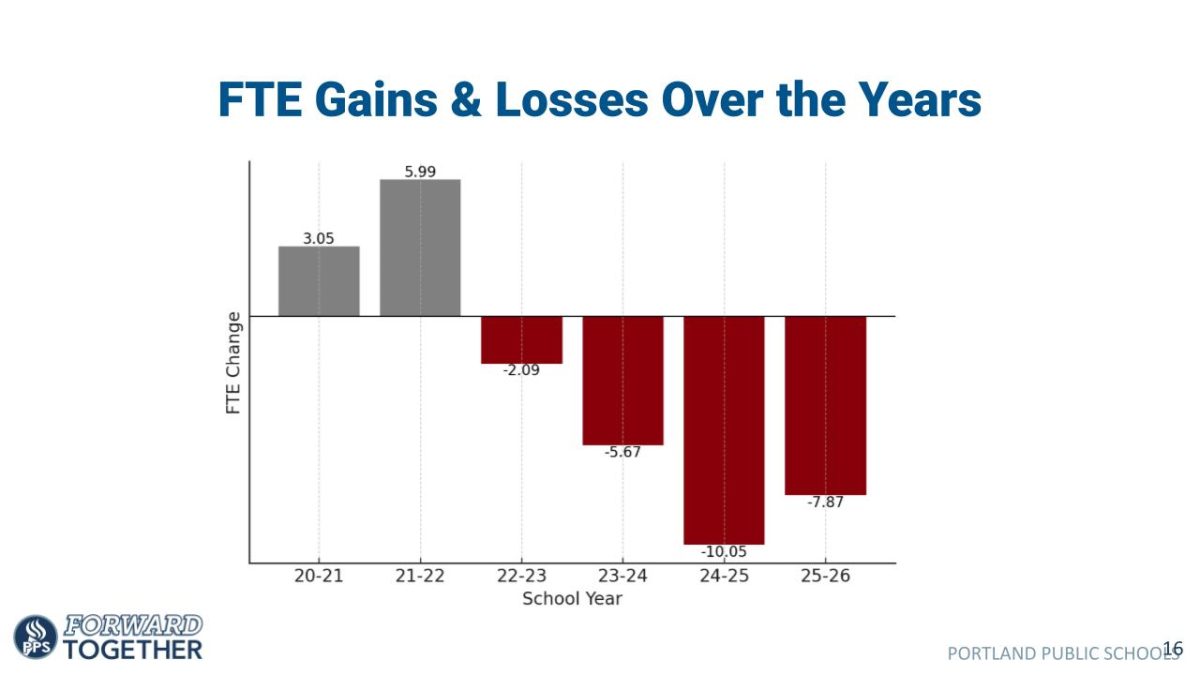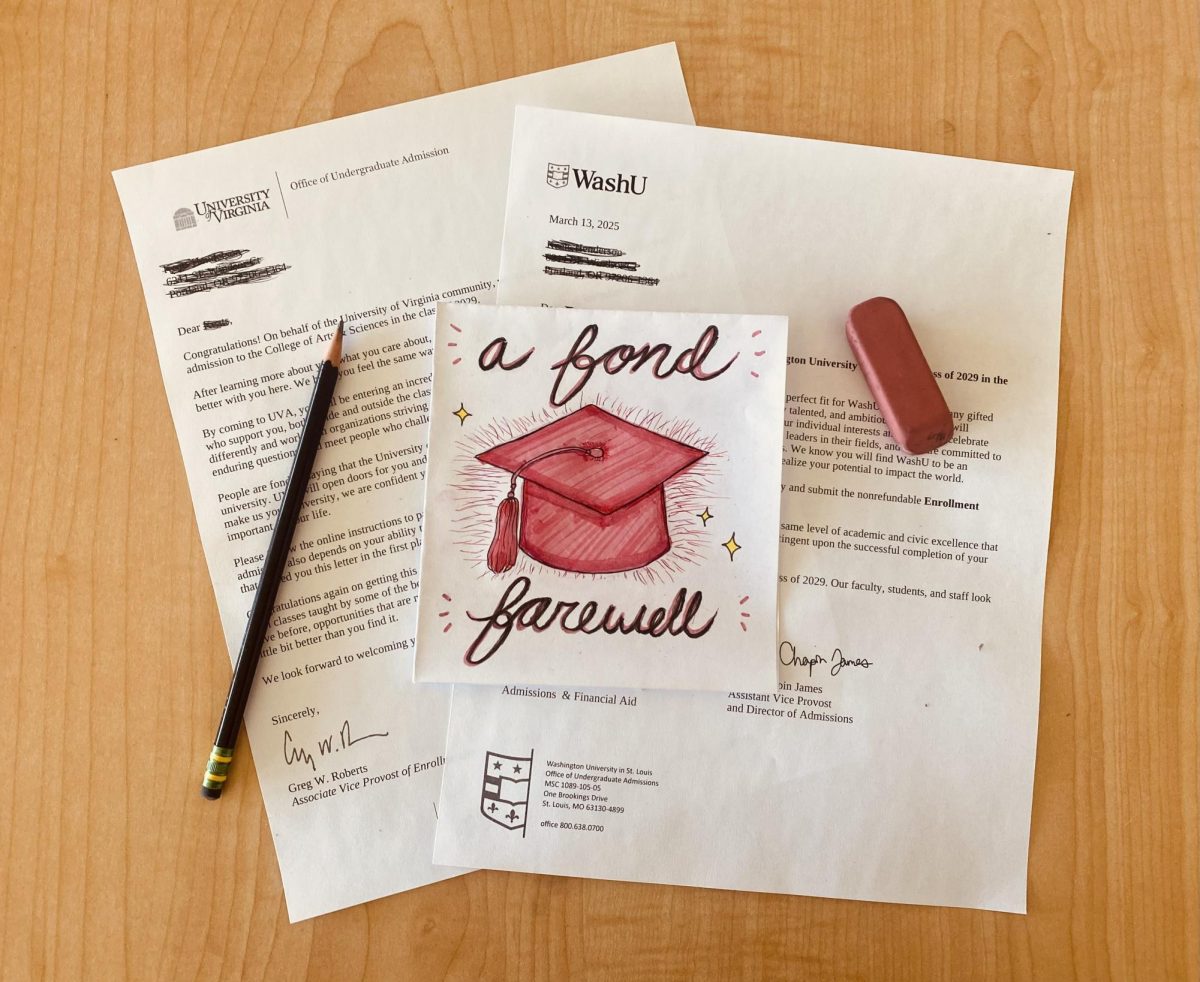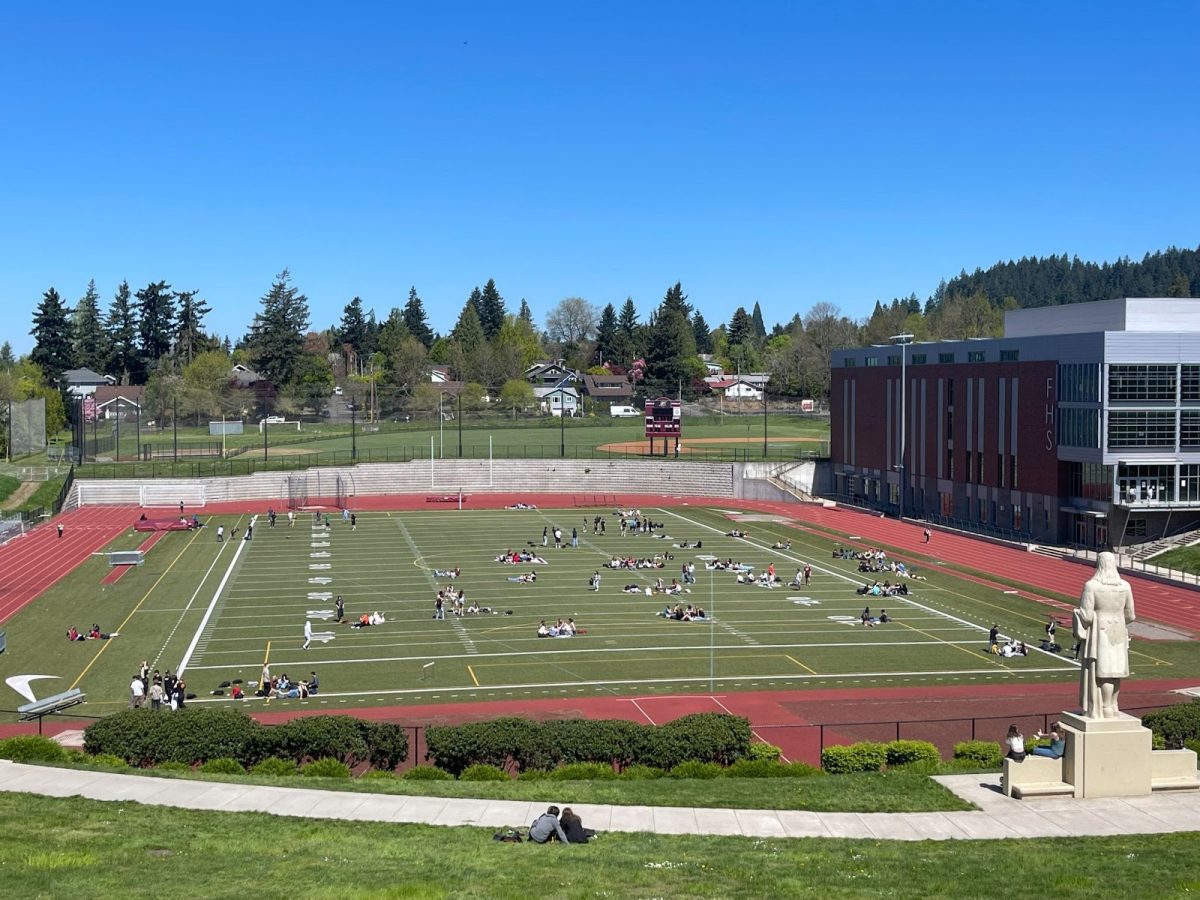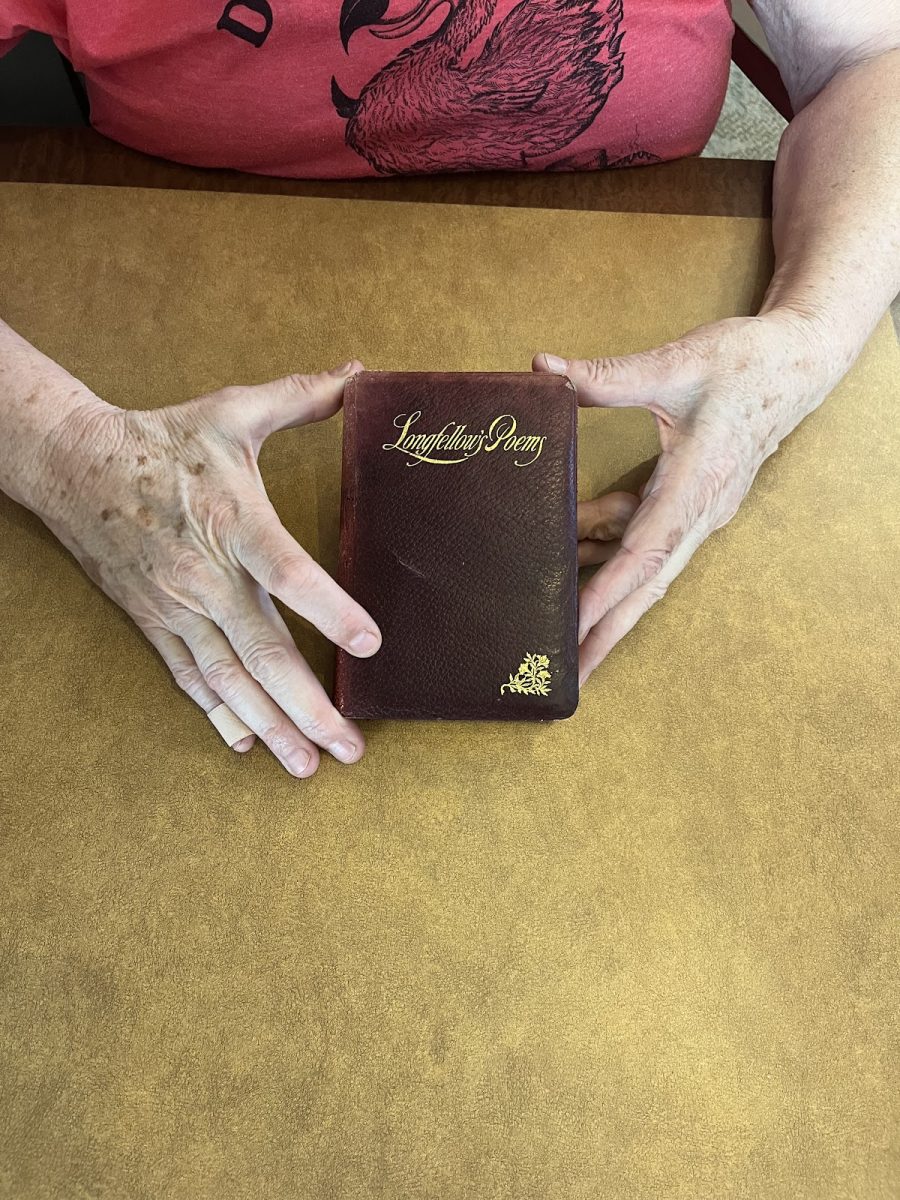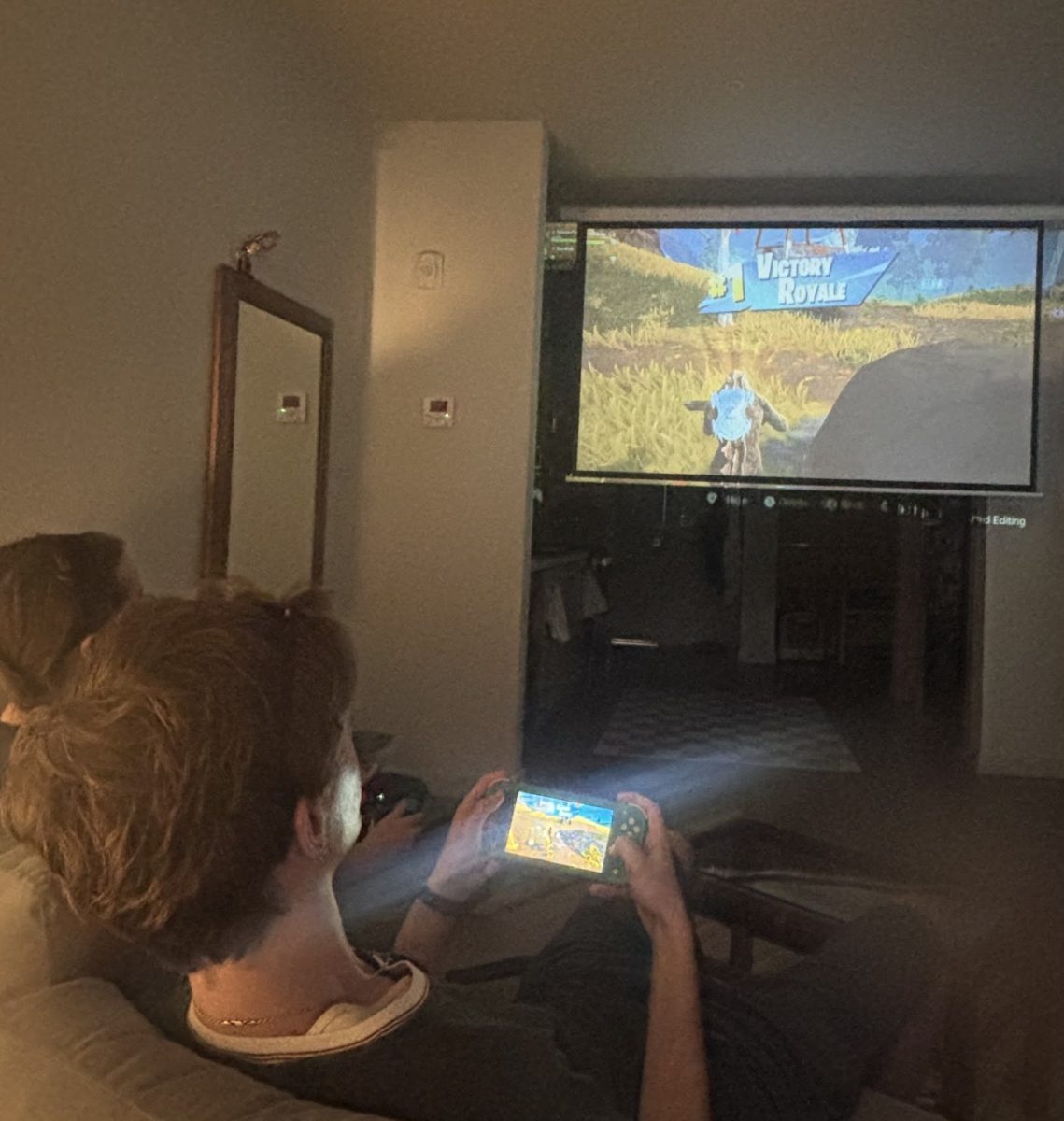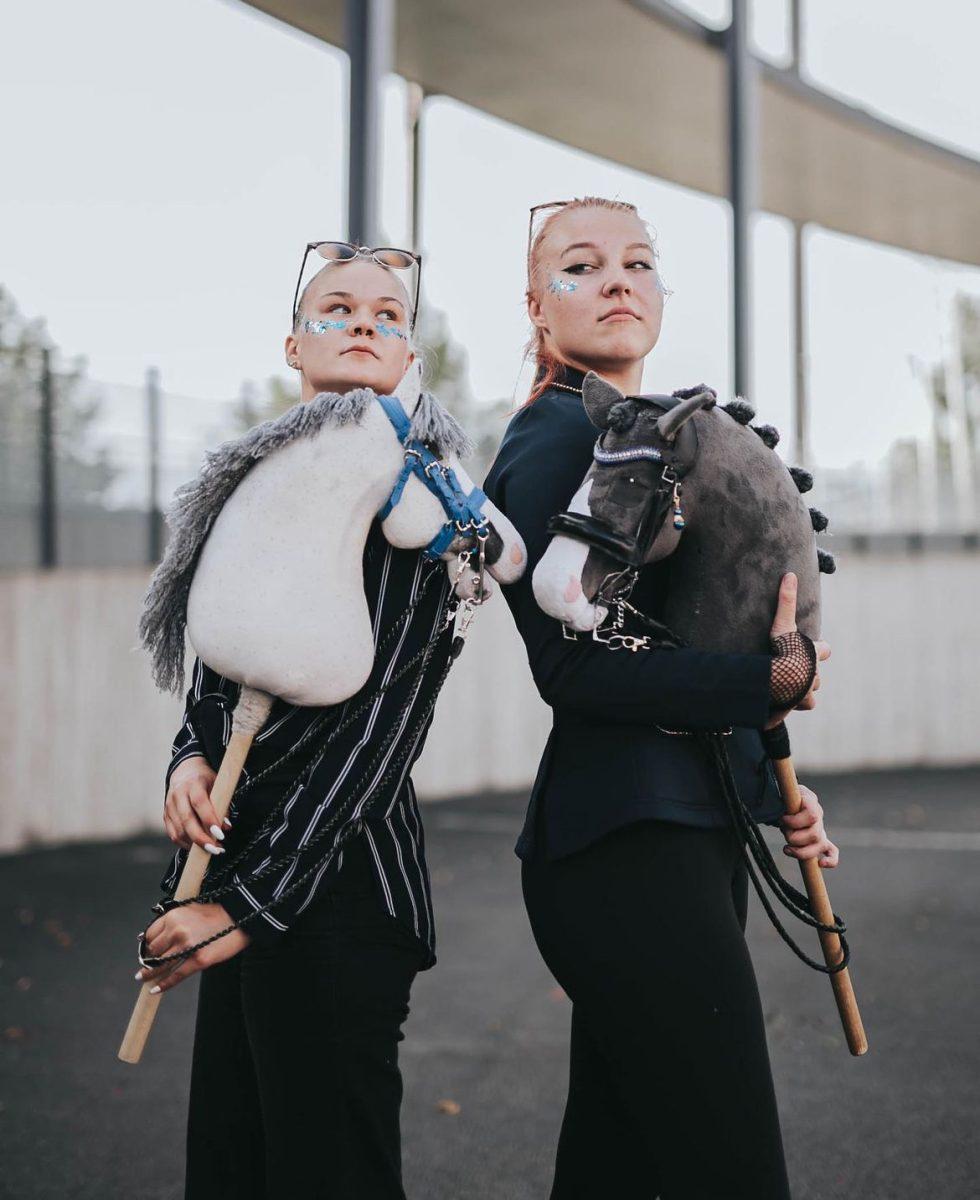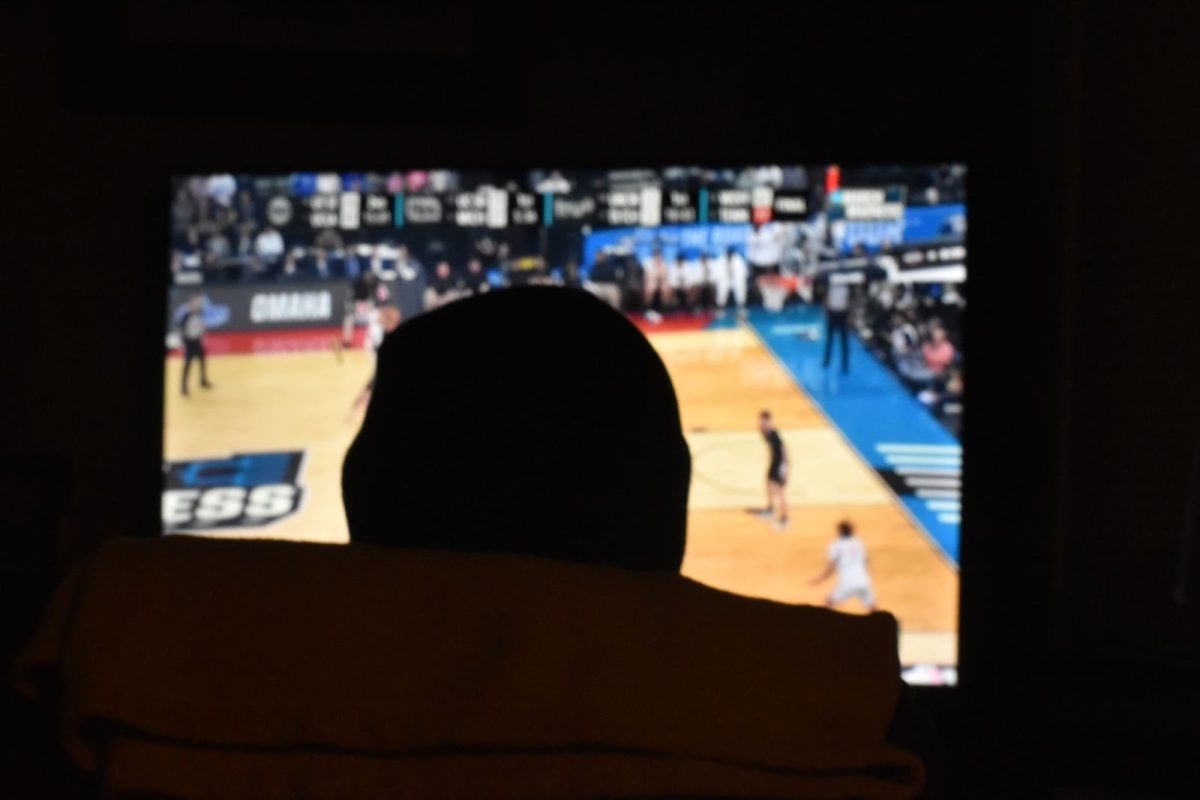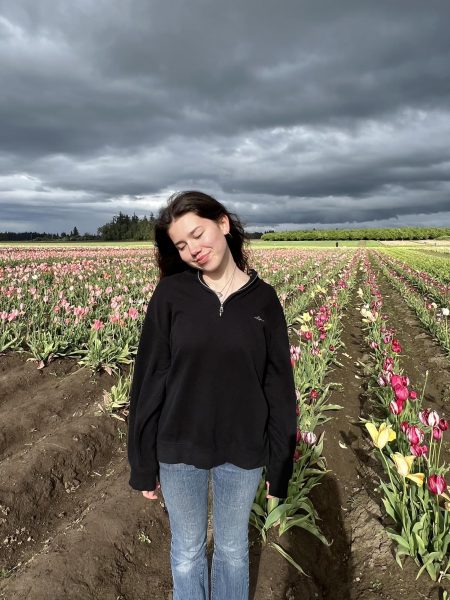Hooves pound the ground as dust clouds form. It’s the finals and Marcus is rounding the track. His trusty steed remains steady beneath him as they make their final leap. In this moment they are united as one. Except his horse doesn’t have hooves, he’s the one doing the leaping, and the track is a gym at California Polytechnic State University (Cal Poly). In fact, the horse is nothing more than a polyester head on a wooden stick. This is the first Cal Poly Hobby Horsing Competition, and Marcus just became the fifth place champion.
Since hobby horsing began in Finland in the 2000s, but the craze has gone global. Over 15 countries were represented at the most recent Finnish Hobby Horse Championships — most notably, Finland, Germany, Denmark, Sweden, Poland, Czechia, and Slovakia. Online communities centered around the sport connect members from opposite ends of the map, all united by their love for (hobby) horses.
A little closer to home, you’ll find that Cal Poly Associated Students Incorporated (ASI) hosted a hobby horsing competition in February of this year. Much to ASI Special Events Student Assistant Madison Hirsch’s surprise, the 350 attendees and 150 participants “truly went all out and it was very positively received.” The event capitalized on Cal Poly’s rodeo-related brand and winners got to attend and perform at the famous Cal Poly Rodeo.
If you have any prior knowledge about hobby horsing, you’re probably envisioning participants jumping over obstacles. This is called “show jumping,” and alongside “dressage,” it is the most common style of hobby horse event. According to a translation of the rules for the Finnish Hobby Horse Championships, dressage “is closely aligned to dancing — the horse and its rider are in harmony, moving smoothly together and showing effortless forward and supple movement.” Dressage scoring is based on performance whereas show jumping is ranked based on speed.
Regardless of the event, there may be what chairman of the Finnish Hobbyhorse Association Julia Mikkonen calls “realistic enthusiasts.” These people give their horses names, build stables for them, and seek to emulate real horse riding. Mikkonen explains that this “is more like an art form.” In contrast, others compete purely competitively.
All hobby horse events require the use of a hobby horse, a stuffed horse head on a stick. While the power for jumps or tricks comes from the hobby horser’s own legs, the horse still plays a vital role in the sport. As Marcus, a Cal Poly student and one-time hobby horser, puts it, “What sets [hobby horsing] apart from other sports is the acting portion. What makes it fun is galloping around pretending like the hobby horse is a real creature.”
Horses come in all shapes and sizes, can be rented or purchased, and are easy to DIY. Many in the community craft their own horses and participate in “showings,” events for hobby horse artisans, where horses are judged on how they’re made and how similar they are to the breed they’re imitating. To participate in hobby horsing all you really need is a stick, such as a broomstick, and reins to attach to it. Mikkonen jokes, “What if someone comes with a hockey stick and puts reins on it?” But according to the Finnish Hobbyhorse Association rulebook, that would be permitted, as the only thing a hobby horse requires is a bridle and reins. This makes joining the sport financially accessible, although doing it competitively typically requires funding your own travel. Since the sport is still developing, it is often difficult to find local competitions, especially outside of Finland.
Natalia, a Polish hobby horse influencer known on Instagram as @kht_shetty, explains, “In hobby horsing, everyone interested is welcome. I’ve never encountered any sort of judgment here, neither financial nor by nationality, skin color, gender, and so on.” Whether an individual can’t afford to ride real horses, lives in a city away from barns, or has other extenuating circumstances, hobby horsing provides a way to join a horse-related community without all of the barriers associated with traditional horse riding.
However, some equestrians are frustrated by the association. Competitive show jumper Mae Neburka states, “[Hobby horsing] felt so mocking to me, a person who has dedicated 12 years of their life to a sport that has caused hundreds of fatalities, hundreds of thousands of injuries a year.” She elaborates, “I don’t mind the concept of hobby horsing in general, these people can do whatever weird shit they want with their lives and it’s none of my business, but when that weird shit starts getting compared to my very real sport it’s annoying.” She adds, “Seriously, [hobby horsers] just need to join track and do hurdles or something.” Surprisingly, hobby horsers might be closer to hurdlers than one would think. Natalia’s high jump record is 140 centimeters or 4.6 feet, while Olympic hurdles are 3.5 feet tall.
More specifically, Neburka is frustrated by what she views as a lack of effort in the hobby horsing community compared to the 5-6 hours per week she spends training, as well as hours spent “cleaning tack, feeding, scrubbing buckets, dragging heavy jumps around, mucking stalls, sweeping, [and] turning horses out.”
Mikkonen also has an intense training schedule — it ranges but is often 15-20 hours per week. She runs, goes to the gym, or does discipline-specific training; for example, show jumping requires practice maintaining speed when landing a jump. Natalia emphasizes the rigor of the sport as well: “If performed at a high level, [hobby horsing] is very tough on the body (joints, muscles, etc.).” The burden is not just physical; participants must be able to withstand intense pressure. At the most recent Finnish Hobby Horse Championships, there were around 1800 spectators. As Mikkonen describes, “It takes a lot from you.”
A large part of Neburka’s frustration stems from the stigma around riding. She states, “Riders do so much and it isn’t even recognized until it’s being made fun of by people with stick horses.” Videos of hobby horsers rack up likes on Instagram and TikTok, yet the comments are full of derision: “wtf is this” or “this needs to be a mental illness.” It’s understandable that she wouldn’t want to be associated with such a hated sport, but for most hobby horsers the aim isn’t to make fun of riding, it’s to provide an alternative way to appreciate it. In fact, Natalia shares in Neburka’s frustration, remarking, “[Hobby horsing] is considered something unusual and crazy, thus we are prone to harassment and misunderstanding from others.” Mikkonen adds, “That’s the hardest thing about this hobby — people don’t understand us. But we have learned to just be ourselves.”
Making fun of both types of riding has become socially acceptable, which calls into question the underlying motives of such treatment. Both traditional riding and hobby horsing are female-dominated. Male sports are rarely ridiculed to the same degree. And one of the most common insults — “horse girl” — is an explicitly gendered term: It’s not just making fun of horse riding, it’s making fun of the fact that women are riding horses.
Although it often aids in harassment, the online component also helps to foster the hobby horsing community. For many, it’s the way they discover the sport, Natalia included. She recalls, “I encountered a video on Facebook showing The Finnish Hobby Horse Championships 2016. I had already been jumping on my feet ever since I started horse riding back in 2013, so when I discovered hobby horsing, I was super excited to try it out.”
Beyond discovering the sport, Instagram provides a way to connect with others even as the community is fractured across countries — or even continents. This is why Mikkonen loves competitions; “it’s cool to see everyone coming together and saying, ‘Oh, I know you and I follow you and I know who you are,’ and then meeting the people who you have talked to through Instagram.”
The community is central to the sport, and competitions are planned by current or former competitors. “Our community is so loving,” states Mikkonen, and she emphasizes that there are many ways to be a part of it. You can compete, collect or craft hobby horses, judge events, or coach. If you’re part of an association, you can even gain experience in event planning, which can translate to a job — or in many people’s cases — is their job. Mikkonen says, “It is my life.” It’s a career, a sport, an artform, and a family all in one.
Hobby horsing is a real sport; neigh, it’s the future of grassroots competition, creating a safe space for young women to exercise and express passion in a world where they’re often prevented from doing either. Natalia states, “It is much more than a sport to me,” and people across the globe are beginning to share this sentiment as the hobby horse obsession gallops into more countries.



